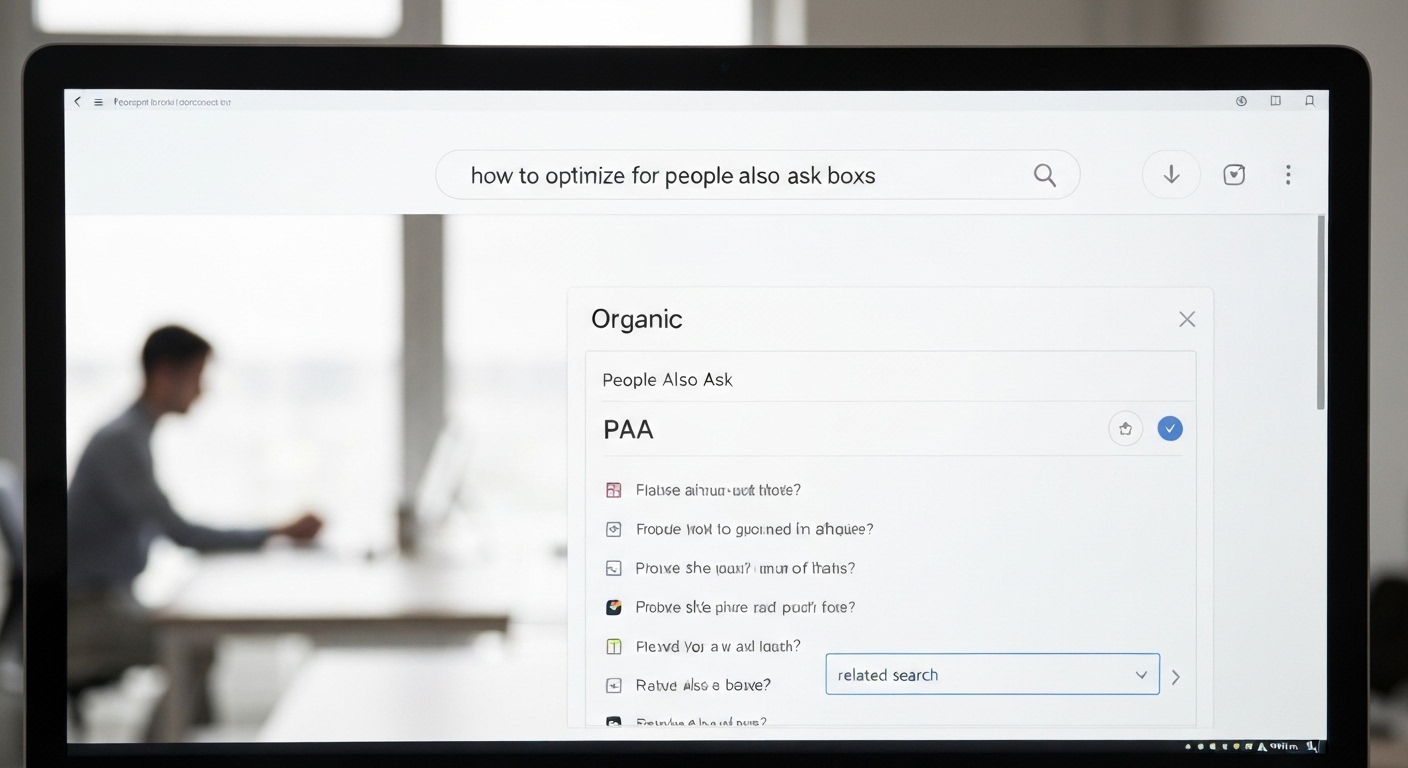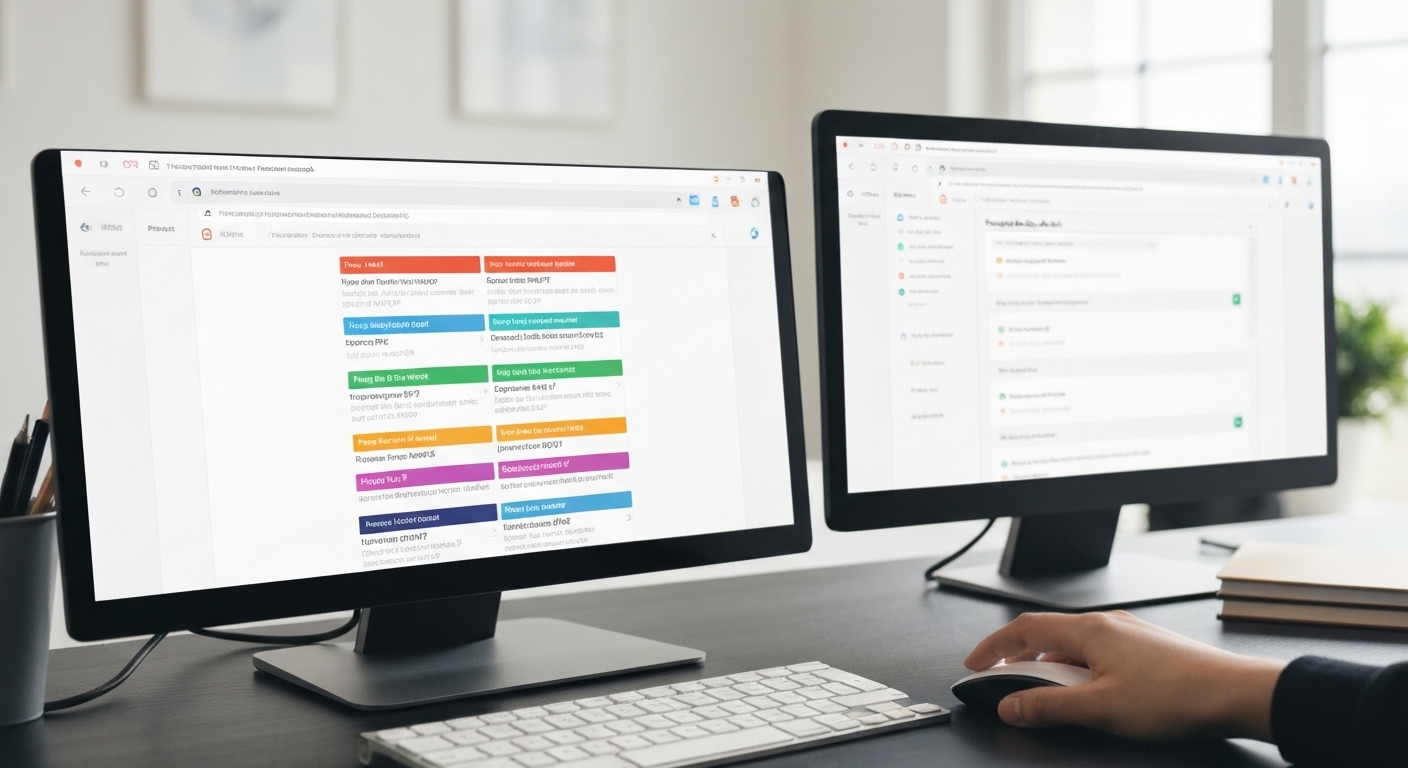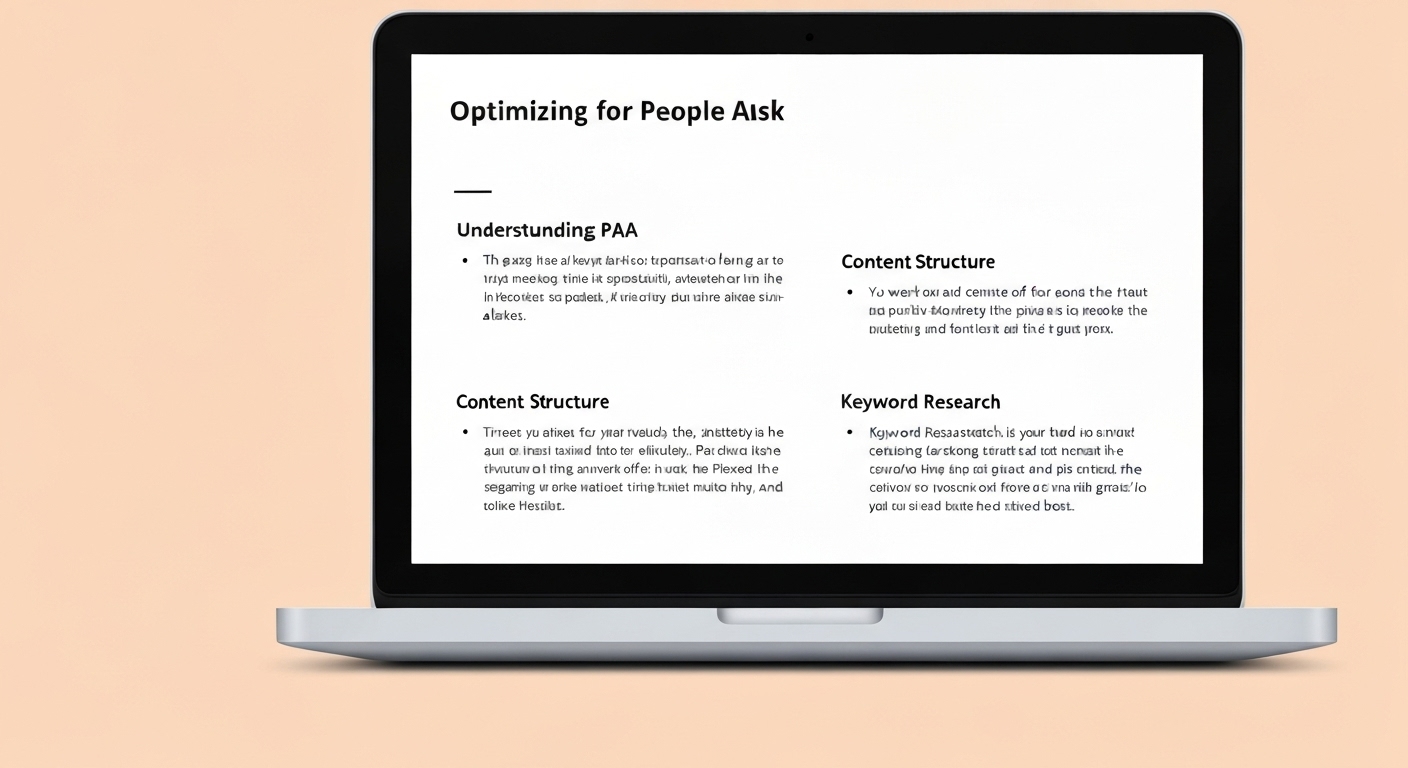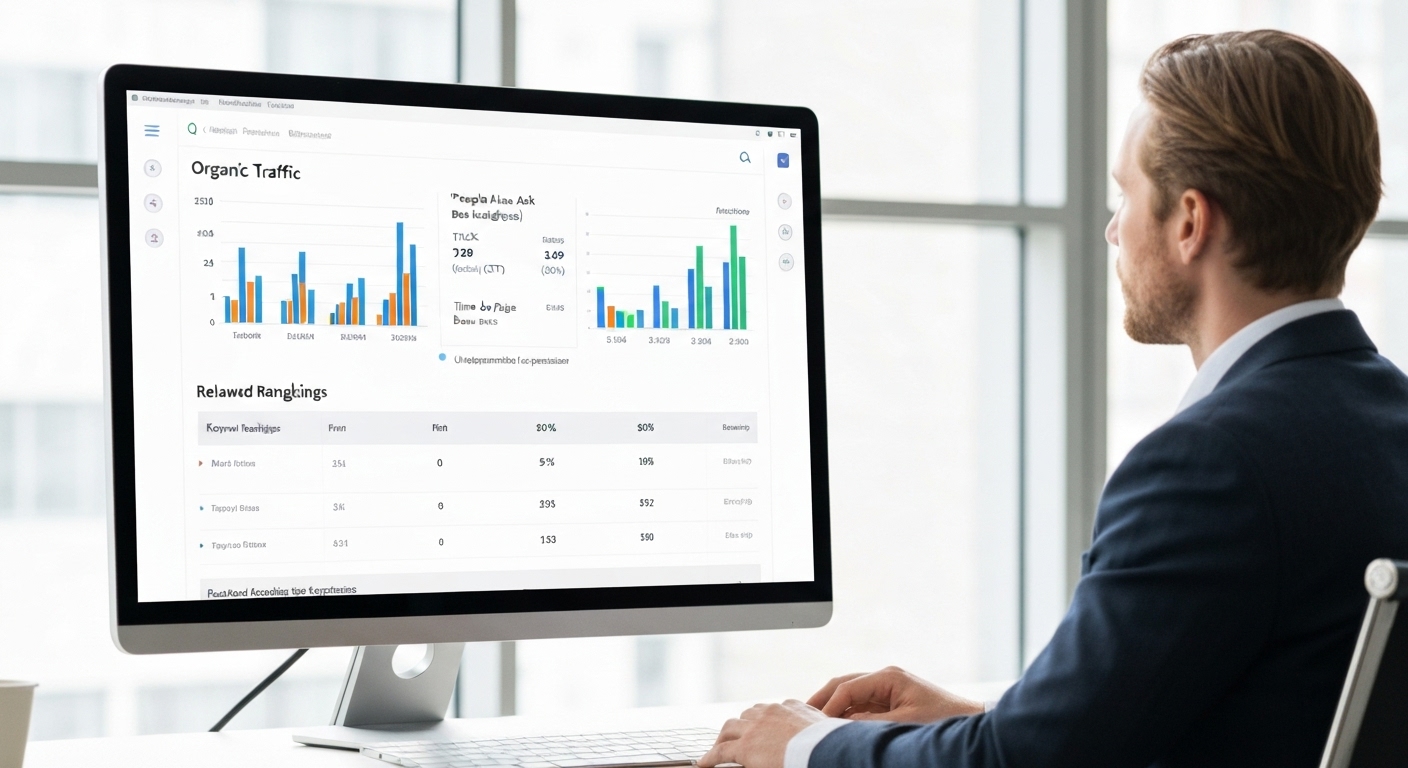Mastering People Also Ask : How to Optimize for People Also Ask Boxes
How to optimize for people also ask boxes? That’s the million-dollar question for many SEO professionals looking to boost their organic visibility. The People Also Ask (PAA) box is a prominent SERP (Search Engine Results Page) feature that can significantly drive traffic to your website if you know how to leverage it effectively. This comprehensive guide will walk you through everything you need to know.

Understanding the People Also Ask Box
The People Also Ask box is a dynamic list of questions related to a user’s search query that Google deems relevant and helpful. These questions expand to reveal concise answers often sourced from various websites. Securing a spot in the PAA box can drastically increase your website’s visibility and credibility.
Why Target People Also Ask?
There are several compelling reasons to target the PAA box:
- Increased Visibility: PAA boxes appear high on the SERP, often above organic results.
- Higher Click-Through Rate: Users actively engage with PAA boxes, leading to higher click-through rates for featured websites.
- Brand Authority: Answering questions in the PAA box establishes you as a knowledgeable authority in your niche.
- Organic Traffic Boost: Successfully targeting PAA can substantially increase organic traffic to your website.
Keyword Research for PAA Optimization
Effective keyword research is the foundation of any successful SEO strategy, and optimizing for PAA is no different. Instead of focusing solely on primary keywords, you need to identify the questions your target audience is asking.

Tools for Finding PAA Questions
- Google’s Autocomplete: Start typing a keyword into Google Search, and pay attention to the suggested questions.
- AnswerThePublic: This tool generates a visual representation of questions and phrases related to your keyword.
- SEMrush & Ahrefs: These SEO tools have dedicated features for identifying PAA opportunities.
- AlsoAsked.com: A tool specifically designed to scrape People Also Ask data and expand upon it.
Identifying Relevant Questions
Not all questions are created equal. Focus on questions that are:
- Relevant to your business: Ensure the questions align with your products, services, or expertise.
- Frequently asked: Prioritize questions with high search volume or that appear in multiple PAA boxes.
- Answerable with your content: Choose questions you can answer comprehensively and authoritatively.
Creating Content Optimized for PAA
Once you’ve identified relevant questions, it’s time to create content that provides clear, concise, and helpful answers. Your content should be structured in a way that makes it easy for Google to extract the answer and feature it in the PAA box.
Content Structure and Formatting
Here are some best practices for structuring your content for PAA:
- Use clear and concise language: Avoid jargon and technical terms.
- Answer the question directly: Get straight to the point in the first paragraph.
- Use headings and subheadings: Structure your content with
and
tags to improve readability and help Google understand the context.
- Incorporate lists and tables: Use bullet points and numbered lists to present information clearly and concisely.
- Keep paragraphs short: Aim for paragraphs of no more than 3-4 sentences.

Answering Questions Thoroughly
While brevity is important, you also need to provide a complete and satisfying answer. Go beyond the basic answer and provide additional details, examples, and resources.
Using Schema Markup
Schema markup helps Google understand the content on your page and can increase your chances of appearing in the PAA box. Specifically, use the Question and Answer schema types to mark up your Q&A content.
Technical SEO for People Also Ask
Technical SEO plays a crucial role in ensuring Google can crawl and index your content effectively. Make sure your website is mobile-friendly, loads quickly, and has a clear and logical site structure.
Website Speed and Mobile-Friendliness
Google prioritizes websites that provide a good user experience. Ensure your website is optimized for speed and mobile devices. Use Google’s PageSpeed Insights tool to identify and fix performance issues.
Site Structure and Internal Linking
A well-organized site structure helps Google understand the relationship between your pages. Use internal links to connect related content and guide users through your website. Create a sitemap and submit it to Google Search Console.
Monitoring and Analyzing Your PAA Performance
Once you’ve implemented your PAA optimization strategy, it’s important to monitor your progress and make adjustments as needed. Track your rankings, organic traffic, and click-through rates to see how your efforts are paying off.
Tracking Your PAA Rankings
Manually searching for your target keywords and checking for PAA boxes is time-consuming. Use SEO tools like SEMrush or Ahrefs to track your PAA rankings automatically. These tools can also alert you when your website appears in a PAA box.
Analyzing Your Organic Traffic
Use Google Analytics to track the organic traffic to your website and identify pages that are performing well in the PAA box. Pay attention to bounce rates, time on page, and conversion rates to understand how users are interacting with your content.

Common Mistakes to Avoid
Optimizing for People Also Ask boxes requires a strategic approach. Here are some common mistakes to avoid:
- Keyword Stuffing: Don’t excessively use keywords in your content. Focus on providing natural and helpful answers.
- Thin Content: Avoid creating content that is too short or lacks substance. Provide detailed and informative answers.
- Ignoring User Experience: Make sure your website is easy to navigate and provides a good user experience.
- Not Monitoring Performance: Track your progress and make adjustments as needed.
Staying Up-to-Date with PAA Changes
Google’s algorithms are constantly evolving, so it’s important to stay up-to-date with the latest changes and best practices for PAA optimization. Follow industry blogs, attend webinars, and experiment with new strategies to stay ahead of the curve. You can learn more about Google’s search algorithm updates on developers.google.com.
How to Optimize for People Also Ask: Advanced Strategies
Beyond the basics, consider these advanced strategies:
- Competitor Analysis: Identify which questions your competitors are ranking for and create better content.
- Video Content: Create video answers to PAA questions and embed them on your website.
- Local SEO: Optimize for local PAA boxes by including location-specific keywords.
Remember to explore the services offered by flashs.cloud for more digital marketing solutions.
Conclusion
Optimizing for People Also Ask boxes is a valuable SEO strategy that can significantly increase your website’s visibility and drive more organic traffic. By understanding how the PAA box works, conducting thorough keyword research, creating high-quality content, and monitoring your performance, you can effectively leverage this SERP feature to achieve your SEO goals. Remember to focus on providing helpful and informative answers that meet the needs of your target audience, and you’ll be well on your way to dominating the People Also Ask box.
HOTLINE
+84372 005 899


